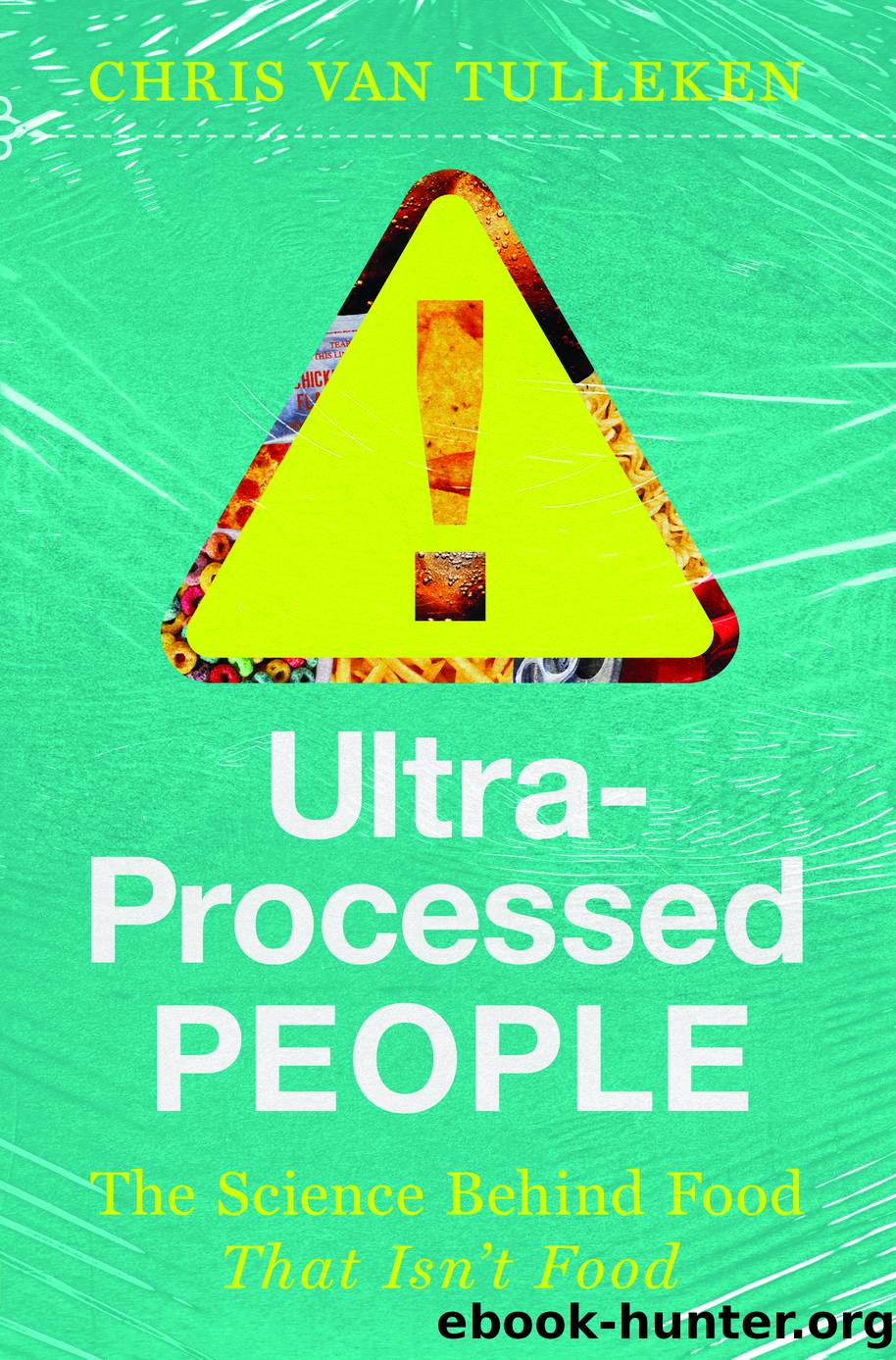Ultra-Processed People by Chris van Tulleken

Author:Chris van Tulleken
Language: eng
Format: epub
Tags: Epub3
Publisher: W. W. Norton & Company
* One of the team, Frédéric Brochet, left academia and now makes wine. In another famous study by Brochet,2 another panel of experts was served a midrange Bordeaux, but from a bottle with a label that suggested it was a cheap table wine. The following week, the same panel had the same wine, but from a bottle with a label indicating it was a grand cru worth many times more. The tasting notes again reflected that expectation overrides the true sensory experience.
â * If you put food in your mouth and chew, molecules go up your nose from the back of your mouth. This retronasal smell feels like taste, and you experience this kind of smelling as being âin the mouthâ â but it isnât, and it makes a huge contribution to flavour. With a nose clip on, the two sweets will taste the same â sweet. But when you take the nose clip off and odours travel from the mouth to the nose, we can taste their different fruit flavours.
â¡ How smell works: air inhaled through the nostrils or up from the back of the mouth, passes over long ridges of bone and up towards the olfactory epithelium, where the olfactory nerves â the smell nerves â poke through the bone into the soft mucus-covered skin to touch the inhaled air. The olfactory system is the only example of the brain sending its own neurons into the environment like a probe. These nerves are covered in hundreds of different receptors â proteins with little pockets on them. Odorants (smell molecules) in the air you inhale bind these receptors and send information to the brain to be decoded (using a few hundred receptors to detect a trillion smells is a coding problem). Each smell molecule binds to more than one receptor, and each receptor binds many smell molecules. And they bind with different strengths for different times, thereby encoding a far greater range of possibilities than if it were one receptor per molecule.
§ The actual number of discriminable olfactory stimuli â i.e. smells â may be much higher than a trillion. You arenât just able to distinguish between individual molecules, but between mixtures of thirty different molecules. You can also distinguish mixtures of identical molecules in slightly different ratios.
¶ There are only fifteen odorants for which science has established the lowest detectable threshold for dogs. But humans are better at detecting low doses of five of those molecules, all of which are fruit or flower odours of less significance to a carnivore presumably. But dogs are unsurprisingly good at detecting low levels of the carbolic acids released by their prey in body odours. Thereâs a lot of literature showing humansâ sense of smell is similar to or more sensitive than dogs, mice or rabbits for odorants in fruit. Mice are good at detecting the molecules found in the urine of mouse predators (although we arenât bad), and we are better than mice at detecting the smell of human blood. Humans can smell the stinky mercaptan added to gas to alert us to gas leaks, but dogs donât smell it at all.
Download
This site does not store any files on its server. We only index and link to content provided by other sites. Please contact the content providers to delete copyright contents if any and email us, we'll remove relevant links or contents immediately.
Ultra-Processed People by Chris van Tulleken(589)
Life-Enriching Education by Marshall B. Rosenberg(495)
Mas by Unknown(281)
In the News by Unknown(130)
Anonymous Security Handbook by name(103)
Promoting effect of potassium on catalytic and surface properties and phase commposition of catalysts for synthesis of alcohols by Unknown(64)
Potassium phthalimide catalyzed efficient synthesis of 2-Amino-3-phenylsulfonyl-4H-chromenes under Solvent-Free Conditions by Xiaomeng Yu & Zhongqiang Zhou(57)
